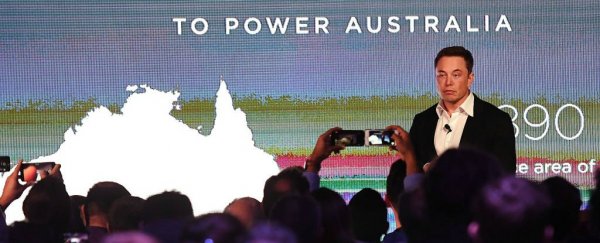Elon Musk will get paid for building the world's largest lithium ion battery in South Australia, with testing on the 100-megawatt project about to begin ahead of next week's December 1 deadline to build it in 100 days, or it's free.
State premier Jay Weatherill announced today that regulatory testing at the site, which is paired with French energy business Neoen's Hornsdale wind farm, 230 kilometres (143 miles) north of the capital, Adelaide, will begin within days.
When fully charged, the Tesla Powerpack is expected to hold enough power for 8,000 homes for 24 hours, or more than 30,000 houses for an hour during a blackout.
The project is part of an AU$550 million plan by the state to guarantee energy supply following a statewide blackout last year that turned into a national political debate over energy security and costs.
A 250MW gas-fired generator, expected to cost AU$360 million, is also due to come online this summer to provide extra power.
The battery is the result of a Twitter bet between the Tesla founder and Atlassian's Mike Cannon-Brookes last March that he would supply the battery within 100 days or it was free.
The clock began ticking when Musk visited Adelaide in September to sign off on the deal - although work was already underway on the plant after the government gave the contract to Musk in July.
Musk had said that if he failed to meet the deadline, it would have cost him "probably $50 million or more".
The Tesla plant will be called upon during periods of "load shedding" - when excess demand would otherwise result in blackouts.
Weatherill said the battery was now completed and the testing will ensure it is optimised and meets energy market regulatory requirements.
"It sends the clearest message that South Australia will be a leader in renewable energy with battery storage," he said.
"An enormous amount of work has gone in to delivering this project in such a short time, and I look forward to visiting Jamestown next week to personally thank those who have worked on this project."
This article was originally published by Business Insider.
